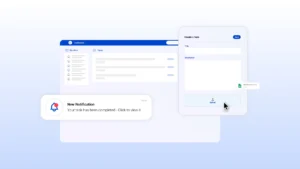When you think about a particular brand, the first thing that probably comes to mind is its visual identity. Those yellow arches creating the alphabet ‘M’ set against a bright right background – it stays with you. Take McDonald’s, for instance.
While visual appearance plays a huge role, another important element that tends to get overlooked is your brand’s voice and the tone it sets in the mind.
Every brand needs a unique voice that helps you position yourself in the market, is consistent, and gives your brand its personality.
Think of it this way: if you were to publish some content without attaching your logo to it, would your audience be able to identify that the content has come from your brand? When your followers view your content on several different channels, would they be able to figure out that it’s all coming from the same brand?
If your answer is ‘no’ to both questions, your brand lacks a specific tone and voice, providing a very inconsistent picture to the audience.
What Is Tone of Voice?
Simply put, the tone of voice represents your brand’s personality. It helps you stand out from the rest and allows you to connect with your audience. The success of your brand lies in making this tone memorable and distinctive.
There is also a very subtle difference between ‘voice’ and ‘tone’ that you ought to know. Voice is the personality that needs to be consistent, while tone is the emotional aspect of the voice. It needs to be adjusted according to the context of the content or message.
Coca-Cola is one of the best examples of a brand with a consistent voice. It always has a friendly and cheerful voice, shown through its unique and colorful advertisements. Coco-Cola always evokes positive feelings and associates happy images with their drink. The tone of the brand’s voice is perfectly constructed in every single advertisement or piece of content from them.
So, how do you do that?

Ways to Define the Tone of Your Brand’s Voice
As a brand, you need to ensure that the tone you set comes through in every communication or message you deliver so that it stands out and resonates well with your audience.
When finding your brand’s tone of voice, you first need to understand who your audience is. Research everything about them, from their gender and age to their job title and interests. In-depth audience research is vital when developing a tone for your brand’s voice.
The key is to identify the generation that you majorly communicate with. For instance, if your target is the millennials, your content needs to be informative but with a playful, entertaining tone.
Determine Your Brand’s Values
Every brand needs to have some core values that help them identify the language of communication required to deliver their message effectively, allowing them to connect with their audience.
Your brand’s voice should be based on those core values because that’s how you’ll achieve consistency. Determining your brand’s core values requires you to answer questions like why your company was set up, things that make your brand unique, the values you want to share with your audience, and what you stand for, to name a few.

Analyze Your Existing Content
If you already have some existing content pieces or messages, analyze and audit them to see how your brand sounds and what kind of tone it has. Does the current style of your brand’s voice fit the brand values you are trying to communicate? Does it reflect the values you included in your mission statement?
When trying to analyze the tone of voice, there are four main dimensions that you should consider: – Funny vs. serious.
- Respectful vs. irrelevant
- Casual vs. Formal
- Matter of fact vs. enthusiastic
Try to see which dimension your brand’s tone is most relevant to. Create Your Tone
Your brand’s tone of voice is a combination of two key factors: – What you sound like
- What do you want to sound like
Analyze the four dimensions of tone mentioned above and assess which one best resonates with your brand.
For instance, a funny tone of voice might lead to higher recall and increased social shares, but at the same time, it can also make your audience think that you are unprofessional.
Your goal should be to create a tone for your brand’s voice that sits well with your audience and reflects the brand’s core values.


